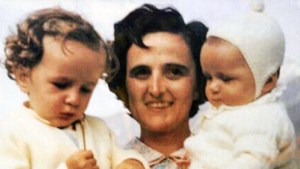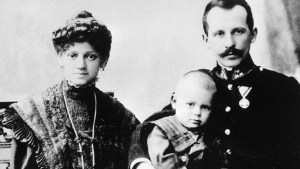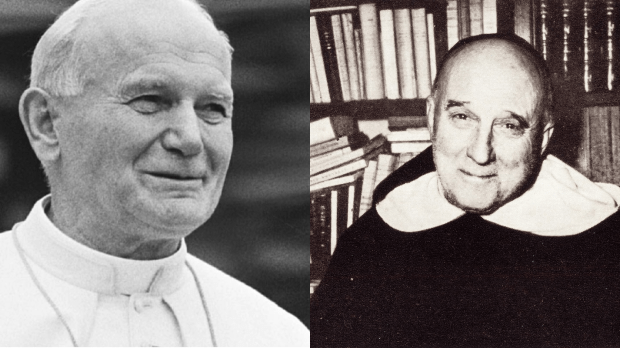Do you ever wonder where saints come from? Sometimes they can seem so otherworldly, we might think they fell from the sky, or sprang out of holes in the ground, halo and all. We can forget that saints were not born holy, but were formed in holiness—by family, by clergy, and by teachers. When we seek the wisdom of the saints, it can also be useful to look to those who helped them to gain that wisdom.
Pope St. John Paul II was undoubtedly one of the most consequential popes in the Church’s history. Even though his time as pope was not long ago, we can already say that his voluminous writings over the many years of his pontificate have shaped the thought of the Church and the spirituality of millions of the faithful.
But who formed him? Who helped to develop the ideas and pieties of the future pontiff? One of his teachers also happened to be one of the most influential theologians of the 20th century.
When Father Karol Wojtyla was studying in Rome, he wrote his doctoral dissertation on the mystical theology of St. John of the Cross. His adviser was the French Dominican Fr. Reginald Garrigou-Lagrange. Though remembered in some circles as the “Sacred Monster of Thomism” for his battles with other theologians over method, Fr. Garrigou-Lagrange’s lasting contributions came in the areas of mystical and spiritual theology. His two-volume The Three Ages of the Interior Life is a master work in the discipline of prayer, and contains countless valuable lessons for Christians to grow in holiness.

Read more:
4 Testimonies about real-life saints from the people who knew and loved them
One point I found particularly helpful from this book was its description of what growth in love for God is, and what it is not.
Fr. Garrigou-Lagrange reminds us that growth in the spiritual life is not quantitative—it doesn’t mean an increase in size, “like a heap of wheat.” If that were the case, then “This addition would multiply charity without making it more intense.” Rather, spiritual growth is qualitative—the love of God “becomes stronger” and “takes deeper root” in our souls. In other words: when we advance in the spiritual life, we don’t just love God more, but more deeply.
This is perhaps best demonstrated when Fr. Garrigou-Lagrange discusses the relationship between good works and charity. He reminds us that while it can be tempting to think that our love for God and our merit before Him will increase with the number of works we perform, it is not the amount of our acts that pleases God, but the fervor with which we perform them—not the quantity, but the quality. He makes a comparison to our natural lives: “a friendship is strengthened only by more generous acts; very imperfect acts serve only to maintain it, not to make it grow.”
Thus, he concludes, “we would do well to multiply generous acts of love of God, not in a mechanical fashion, like counting them, but on every opportune occasion, in order to preserve the spirit of fervor and to avoid growing tepid.” This is not to say that we shouldn’t, say, build a habit of praying a daily Rosary, but rather that we should endeavor to make every Rosary an opportunity to grow in the love of God, and not to think that the mere repetition of the action will itself deepen the hold of Charity on our hearts.
One could easily multiply examples of Pope St. John Paul II’s writings that echo these sentiments: that we should desire a deeper and more fervent charity.
Consider these words from his apostolic letter on the Rosary, Rosarium Virginis Mariae: “If this repetition is considered superficially, there could be a temptation to see the Rosary as a dry and boring exercise. It is quite another thing, however, when the Rosary is thought of as an outpouring of that love which tirelessly returns to the person loved with expressions similar in their content but ever fresh in terms of the feeling pervading them.” Prayer that is not mechanical but deepens love—does that sound familiar?
Every saint is formed in a Christian community, with mentors in discipleship shaping their faith in Christ. It can be worthwhile to seek out the voices behind the halo.

Read more:
Archdiocese of Krakow opens beatification process of John Paul II’s parents

